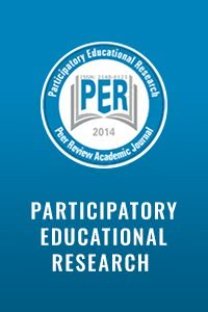The use of ICT in teaching English as a foreign language
During the last
two decades, the integration of ICT in language education has become a major
interest of topic in language educational realm. Research findings over the past
two decades provide some evidence as to the positive effects of the use of
information and communications technology (ICT) on students. EFL teachers are
expected to adopt a new view of their roles and professional development in the
rapidly changing modern society. It is
needed to explore particular skills required for ICT to enhance language
learning. The use of ICT as a teaching tool emphasizes obtaining, analysing and
organizing information, by this way giving chance students to get in touch with
different kinds of media. Integration of ICT necessitates deciding on the use
of different ICTs in each skill, the
types of ICT applications to be used, planning the favourite activities,
managing problems arising from the activities planned, and so on. Information
and Communication Technologies (ICTs) can be regarded as a new model of
teaching and learning.. This review study is framed around to provide a deep
and clear understanding about use of ICT in teaching English and examine ICT to
meet the new educational demands of the current era. Namely, the aim of this
paper is to present a comprehensive review as to advantages and disadvantages
of using ICT as an instructive tool in EFL classrooms. Based on aforementioned
considerations, this review study aims to shed light on how ICT contribute to
English learning process and help identify the factors influencing the success
implementation of ICT. Furthermore, the certain major suggestions will be made
to maximize beneficial use of ICT in EFL classroom settings.
___
- Altun, M. (2015). The integration of technology into foreign language teaching. International Journal on New Trends in Edıcation and Their Implications. 6(1). 22-27.
- Asabere, N. Y. & Enguah, S. E. (2012). Integration of expert systems in mobile learning. International. Journal of Information and Communication Technology Research, 2 (1), 55–61.
- Blackmore, J., Hardcastle, L., Bamblett, E., & Ownens, J. (2003). Effective use of information and communication technology (ICT) to enhance learning for disadvantaged school students. Deakin University, Retrieved from www.dest.gov.au/NR/rdonlyres/D63F92A3-931.../ICTreport.pdf
- Cox, M., Preston, M., & Cox, K. (1999). What factors support or prevent teachers from using ICT in their classrooms? King's College London, MirandaNet Project University of Surrey. Paper presented at the British Educational Research Association Annual Conference, University of Sussex at Brighton, September 2-5 1999.
- Hennessy, S., Ruthven, K. & Brindley, S. (2005). Teacher perspectives on integrating ICT into subject teaching: Commitment, constraints, caution and change. http://www.educ.cam.ac.uk/research/projects/istl/WP042.pdf
- Houcine, S. (2011). The effects of ICT on learning/teaching in a foreign language Retrieved from http://www.pixel- online.net/ICT4LL2011/common/download/Paper_pdf/IBL69-437-FP-HoucineICT4LL2011.pdf [5]
- Jayanthi, N. S. & Kumar, R. V. (2016). Use of ICT in English language teaching and learning. Journal of English language and literature, 3(2), 34-38.
- Livingstone, S. 2012. Critical reflections on the benefits of ICT in education, Oxford Review of Education. http://dx.doi.org/10.1080/03054985.2011.577938.
- Padurean, A. & Margan, M. (2009). Foreign language teaching via ICT. Revista de Informatica Sociala. 3(12).
- Hennessy, S., Ruthven, K.. & Brindley, S. (2005). Teacher perspectives on integrating ICT into subject teaching: Commitment, constraints, caution and change. http://www.educ.cam.ac.uk/research/projects/istl/WP042.pdf
- Yunus, M., Nordin, N., Salehi, H., Sun, C. H. & Embi, M. A. (2013). Pros and cons of using ICT in teaching ESL reading and writing. International Education Studies, 6 (7), 119-130. doi:10.5539/ies.v6n7p119 URL: http://dx.doi.org/10.5539/ies.v6n7p119
- ISSN: 2148-6123
- Yayın Aralığı: Yılda 6 Sayı
- Başlangıç: 2014
- Yayıncı: Özgen KORKMAZ
